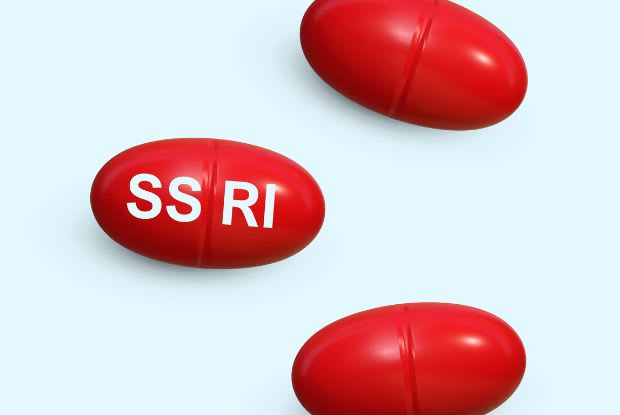Escitalopram vs Sertraline: A Guide to Choosing the Right SSRI for You
Escitalopram vs Sertraline: A Guide to Choosing the Right SSRI for You
Table of Contents
I. How Escitalopram and Sertraline Work
II. Escitalopram vs Sertraline: What They Treat
III. Escitalopram vs Sertraline: Side Effect Comparison
IV. Escitalopram vs Sertraline: Dosing and Administration
V. How Long Do They Take to Work?
VI. Discontinuation and Withdrawal Symptoms
VII. Lifestyle and Complementary Approaches
When it comes to treating depression or anxiety, most people will hear about selective serotonin reuptake inhibitors, or SSRIs. Among them, escitalopram and sertraline are two of the most widely prescribed options. Both are effective, but when we talk about escitalopram vs sertraline, there are meaningful differences in side effects, dosing, and how each medication fits into a treatment plan.
This SSRI comparison will guide you through the actions of each drug, their similarities, differences, and what you can expect if you and your doctor choose one over the other.
How Escitalopram and Sertraline Work

Escitalopram and sertraline both work by blocking the reuptake of serotonin, a neurotransmitter that regulates mood, sleep, and stress response. By preventing serotonin from being reabsorbed too quickly, these medications increase serotonin levels in the brain and help stabilize mood. 1 2
- Escitalopram is the purified S-enantiomer of citalopram, meaning it is a more targeted version of its parent compound. This increased selectivity means it binds strongly to the serotonin transporter and has fewer effects on other receptors, which can translate to a cleaner side effect profile for some patients. 1
- Sertraline, while still highly selective, has more dopaminergic activity compared to other SSRIs, which may give it a slightly energizing effect. This can be helpful for patients whose depression includes low motivation and fatigue. 2
This pharmacologic distinction between escitalopram vs sertraline is an important part of this SSRI comparison because it can affect how you feel day to day.
Escitalopram vs Sertraline: What They Treat
Looking at escitalopram vs sertraline side by side, both cover a wide range of mental health conditions. Escitalopram is FDA-approved for:
Escitalopram can also be prescribed by doctors off-label for panic disorder, social anxiety disorder, obsessive-compulsive disorder (OCD), post-traumatic stress disorder (PTSD), and premenstrual dysphoric disorder (PMDD).
Sertraline has an even broader list of approved uses. It is FDA-approved to treat:
- Major depressive disorder (MDD)
- Obsessive-compulsive disorder (OCD)
- Post-traumatic stress disorder (PTSD)
- Premenstrual dysphoric disorder (PMDD)
- Social anxiety disorder
Sertraline can also be prescribed by doctors off-label to treat generalized anxiety disorder (GAD), binge eating disorder, body dysmorphic disorder, bulimia nervosa, and premature ejaculation.
Escitalopram vs Sertraline: Side Effect Comparison
Side effects are an important part of any SSRI comparison. Escitalopram and sertraline share common side effects, like:
- Nausea
- Headache
- Fatigue
- Sexual side effects such as lowered libido, delayed orgasm, or erectile difficulties 1 2
These issues often improve after the first few weeks, but they can be bothersome. If the side effects persist or interfere with everyday life, contact your doctor. They can work with you to find solutions.
Some differences between escitalopram vs sertraline stand out:
- Sertraline is more likely to cause gastrointestinal side effects, particularly diarrhea. 2
- Escitalopram has a slightly higher risk of QT interval prolongation, which affects heart rhythm and may require monitoring if you have heart conditions or take other medications that prolong the QT interval. 1
Both medications can rarely lead to serotonin syndrome, a potentially serious condition caused by too much serotonin, especially if combined with other serotonergic drugs. 1 2
Escitalopram vs Sertraline: Dosing and Administration
Escitalopram is typically started at 10 mg once daily, and the dose can be increased to 20 mg after a week if needed. 1
Sertraline starts at 50 mg once daily, with gradual weekly increases up to a maximum of 200 mg per day. 2
Both are taken orally and can be taken with or without food. If sertraline causes sleepiness, it can be taken in the evening to minimize this effect. If it causes insomnia, morning dosing may be more effective. 1 2
How Long Do They Take to Work?
When comparing escitalopram vs sertraline, neither works overnight. Both medications require time to build up in the body. People often notice the first improvements in symptoms within 1 to 2 weeks, but full benefits usually take 4 to 6 weeks. This delayed response is normal and not a sign that the medication isn’t working. 3 4
Due to this timeline, doctors typically advise patients to continue treatment for at least 6 weeks before making any changes. Abruptly stopping an SSRI can cause withdrawal symptoms, so any changes should be supervised. 1 2
Discontinuation and Withdrawal Symptoms
Another important consideration in any SSRI comparison is what happens when it’s time to stop treatment. Both escitalopram and sertraline can cause withdrawal symptoms if they are discontinued too quickly. These symptoms can include nausea, irritability, dizziness, and sensory disturbances. 1 2
To avoid these issues, doctors typically recommend a gradual taper rather than stopping abruptly. This slow taper allows the brain to adjust and reduces the risk of discontinuation syndrome. Patients planning to stop either medication should never do so on their own. It’s best to work closely with a healthcare provider who can set up a taper schedule and monitor for withdrawal effects or symptom relapse.
Lifestyle and Complementary Approaches

This SSRI comparison would be incomplete without mentioning that medication works best when paired with lifestyle strategies:
- Cognitive behavioral therapy (CBT) is one of the most effective tools to pair with medication. CBT helps you identify unhelpful thoughts and behaviors that keep you stuck in cycles of anxiety or depression.
- Sleep hygiene is crucial, especially since both medications can impact sleep in distinct ways. Sertraline can sometimes be activating, leading to trouble falling asleep, while escitalopram may cause drowsiness for some. Creating a bedtime routine, limiting screen time an hour before sleep, and reducing caffeine intake can help offset these effects and make the medication easier to tolerate.
- Stress-management practices like mindfulness meditation, journaling, or yoga can enhance the benefits of SSRIs.
While reading an SSRI comparison like this one on escitalopram vs sertraline is helpful, it’s just as important to include lifestyle changes alongside medication to create a well-rounded treatment plan.
Conclusion
Escitalopram vs sertraline is a common decision point in mental health care. Both are effective, safe, and widely used. The choice often comes down to side effect tolerability, specific conditions being treated, and personal response. For example, sertraline may be a better fit for people with comorbid PTSD or PMDD, while escitalopram may be favored for patients who need a cleaner side effect profile and are sensitive to GI issues.
Regardless of the option you choose, regular follow-up with your doctor is crucial to monitor progress, manage side effects, and adjust dosing as needed.
References
- Landy, K., & Estevez, R. Escitalopram
- Singh, H. K., & Saadabadi, A. Sertraline
- NHS Common questions about sertraline
- NHS Common questions about escitalopram
